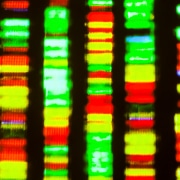Four types of genomic testing explained
In the age of genomics, it can be difficult to understand the ins and outs of different types of testing; here we break down four of the most common
There are many different kinds of genetic and genomic tests. And, contrary to popular belief, newer tests and technologies, rather than taking over from old ones, have generally added to the testing options for clinicians and scientists. Tests are also performed at various stages in the patient pathway: a test could be done to diagnose disease or to determine how best to treat it once it has already been diagnosed, for example. Below, we tease out some of the differences between four common types of testing.
1. Diagnostic testing
A diagnostic test should usually give a yes/no result.
Diagnostic tests are usually ordered when a clinician has reason to think – because a patient has relevant symptoms, known as the ‘clinical presentation’ – that the patient may have a particular genetic condition. The clinician can use the test to confirm their initial diagnosis, or alternatively to rule out a possible cause of the symptoms. Tests can also help differentiate between two or more conditions that have similar symptoms.
Where the doctor suspects a known condition, testing will look at a specific gene variant or allele, or alternatively at a small panel of genes known to be associated with the condition. However, there are many cases of undiagnosed rare disease where a less targeted approach is taken. Much or all of the genome is sequenced – increasingly using whole genome sequencing – and this sequence can then be run against various panels of gene variants associated with diseases, giving the best possible chance of a diagnosis. This is what happens in the 100,000 Genomes Project’s rare disease programme. Where nothing is found, the genome sequence can be kept on file and reinvestigated as new evidence emerges.
2. Clinical predictive testing
Predictive tests are carried out to determine whether or not someone is susceptible to a particular condition before they are displaying any symptoms.
Increasingly individuals are ordering predictive tests privately, but in a medical setting predictive tests are usually ordered when a genetic condition has been diagnosed in a family member, and clinicians want to determine who else in the family is affected. In this instance, the causative gene variant has usually already been identified, so a very targeted test is used.
Tests of this sort are usually performed in two scenarios. First, a scenario where the gene in question is associated with a condition that is ‘actionable’ – meaning that it can be treated, or that risk can be reduced with lifestyle changes and/or regular screening. Second, a scenario where the condition in question is not actionable but is sufficiently severe that people may want to know about it before making major life decisions (such as starting a family).
The predictive power of such tests can vary depending on the penetrance and expressivity of the gene in question. In conditions caused by fully penetrant genes such as Huntington’s disease (where everyone who has the genotype will develop the disease if they live long enough), a genetic test result can be used to predict confidently whether an individual will be affected. However, the majority of predictive tests provide probabilistic results. A test for a variant in the BRCA1 gene, for example, can reveal the presence of a variant that significantly increases someone’s likelihood of developing breast and ovarian cancer, but cannot say for sure that they will develop it.
The picture is complicated still further by variable expressivity, which means that symptoms can present differently – or vary in severity – even between closely-related individuals. Testing can still be beneficial, however. For example, in cases of hereditary haemochromatosis, a diagnosis can be helpful in preventing long-term complications which can occur even in individuals who do not suffer acutely.
3. Pharmacogenomic testing
Pharmacogenomics is the study of the genomic determinants of drug response, and testing allows clinicians to obtain information about how an individual’s genome affects their response to medication. This information can include whether a particular medicine will be effective or ineffective, and how likely the medicine is to cause particular side-effects.
This information can be considered by clinicians alongside other factors like the patient’s age and weight, and any other medical conditions the patient has, when making decisions about the best treatment option and dosage for an individual.
Currently, drug interventions are thought to be effective in only 30-60% of patients, and one in every 15 UK hospital admissions is linked to an adverse drug reaction. It is hoped that pharmacogenomics will continue to aid more accurate prescribing, in turn reducing unnecessary side effects and saving time and money spent on ineffective prescriptions and hospital admissions.
Pharmacogenomics is part of the vision for integrating genomics into the NHS – as outlined in the ‘Generation Genome’ report by England’s Chief Medical Officer Professor Dame Sally Davies – but it has yet to be rolled out as part of the NHS Genomic Medicine Service.
4. Tumour testing
Sequencing the DNA of a cancerous tumour can identify gene mutations present in the tumour cells that are either actionable – meaning targeted treatment can be offered – or warrant further study. There are certain types of medications that target specific genetic mutations in the tumour – such as Herceptin. As Dr Alison Berner of the Barts Cancer Institute in London recently told Genetics Unzipped, however, these patients are currently in the minority; hence the need for further study and new targeted treatments.
Comparing the genomes of a patient’s tumour cells with those of the patient’s healthy cells can also help in identifying genes that are actionable in other ways. For example, it could help identify new research targets such as genes that are seen to be ‘driving’ cancers to develop and spread. It is anticipated that the wealth of information generated by newer sequencing methods will be particularly useful when it comes to studying the progression of cancer and selecting patients for clinical trials. Indeed around 50% of the results returned through the 100,000 Genomes Project cancer programme indicate potential for therapy and/or clinical trials.
To learn more about the use of genomics in oncology visit our oncology page and watch an interview with Dr Alison Berner about mutational signatures.
Beyond the clinic
Other kinds of predictive test also exist, although these currently have fewer clinical applications and are therefore more often seen in research or in direct-to-consumer contexts.
There are consumer tests available that look at single-gene variants associated with an increased (or decreased) risk of specific illnesses. There are also tests that look at multiple genes which each have a small effect on a particular characteristic, and then seek to combine these results into a ‘polygenic score’ – an overview of a person’s risk of having a condition, relative to the average risk of having the same condition within the population.
While interesting, such polygenic scores are the subject of ongoing debate and provide only probabilistic information. They are not commonly used in the clinic.
–









